When you're sprucing up your yard, you're going to want to shop conifers that'll contrast and support the landscaping you've already put down. What options do you have, though, that are small enough to share space but large enough to make a statement?
Dwarf conifers are the perfect marriage of compact and eye-catching.
What types of dwarf conifers, though, do you get to choose from? There are several that have been used to great success in landscaping schemes before - so let's explore your options.
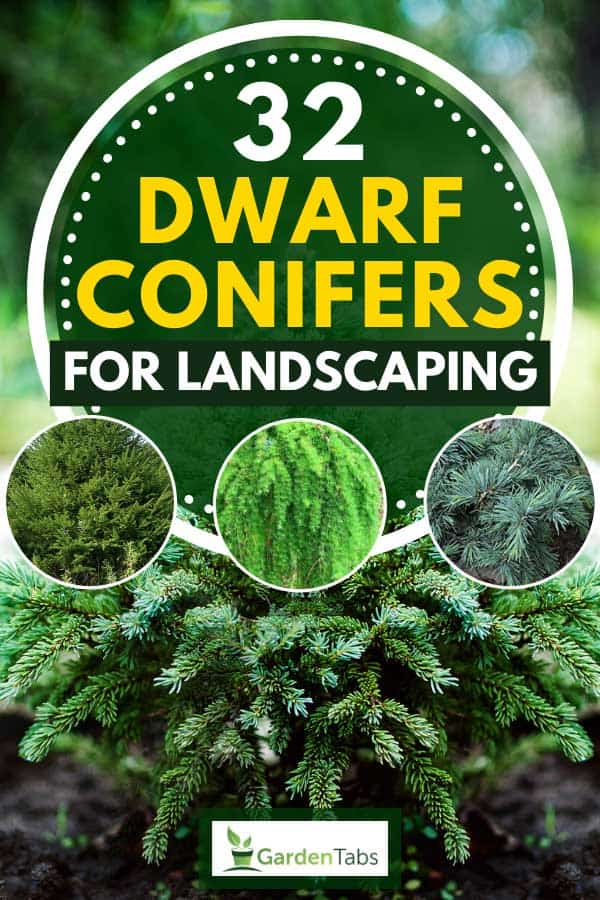
Ready to bring a burst of color to your front lawn? Take a gander at some of the dwarf conifers you can introduce into your landscaping scheme:
1. Dwarf Greek Fir
Also known as "Meyer's Dwarf," the Greek Fir (Abies cephalonica) is an evergreen that'll make a splash in your front yard. These conifers will either spread low to the ground or form the standard conical shape of a fir, depending on the scion wood with which it was propagated.
What does that mean for you? You'll need to check in with your local nursery to see what kind of shape you'll be working with. In either circumstance, though, you'll be able to enjoy the pine smell and green spread all year round.

2. Dwarf White Fir
Dwarf white firs (abies concolor) are more frequently referred to as "Archer's Dwarf" fir trees. These firs grow low to the ground and retain their bright green color all year round. If you're looking for a slow grower, then this is the fir to work with - white firs tend to grow a mere 3 to 4 inches per year.

For the best growth, make sure that your white fir is in full sun or partial shade, and that it's roots aren't exposed to too much water.
You can find this landscaping fir and more like it at your local nursery.
3. Dwarf Korean Fir
Dwarf Korean firs (Abies koreana) are smaller than most of their cousins but still, cap out at 30 feet in height.
They're the ideal addition to any front yard if you're looking for a bit of evergreen color.
The Dwarf Korean fir is native to South Korea and prefers full sun with partial sunlight. Unfortunately, this type of fir does not thrive in clay soil and will instead need a looser, well-drained soil if it's going to thrive.
4. Dwarf Subalpine Fir
Also known as the Blue Compacy Subalpine Fir, Dwarf Subalpine Firs (Abies lasiocarpa 'Glauca Compacta') has one of the lengthier titles of all the conifers you can introduce to your lawn. Once those introductions have been made, however, you'll be able to enjoy the fir's minimal growth and conical shape.
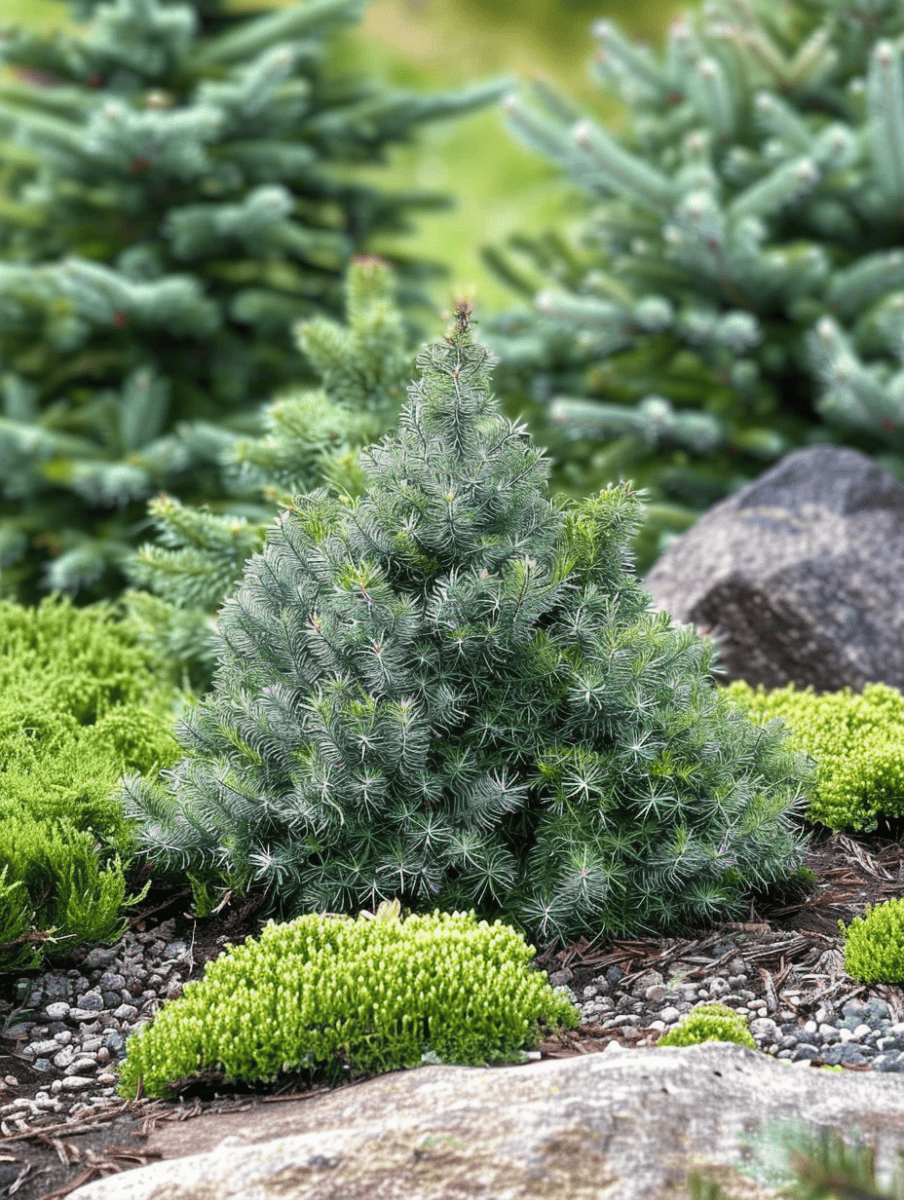
While this fir is evergreen, it's perhaps more fitting to call it "ever-blue," as the pine needles give off a distinctly blue hue to contrast with the rest of your yard.
You can find this landscaping fir and more like it at your local nursery.
5. Dwarf Nordmann Fir
Dwarf Nordmann firs (Abies nordmanniana) are a bit bushier than some of their peers. These are the ideal conifers to work with if you want a rounder addition to your landscaping, as opposed to the conical shape of your standard firs.
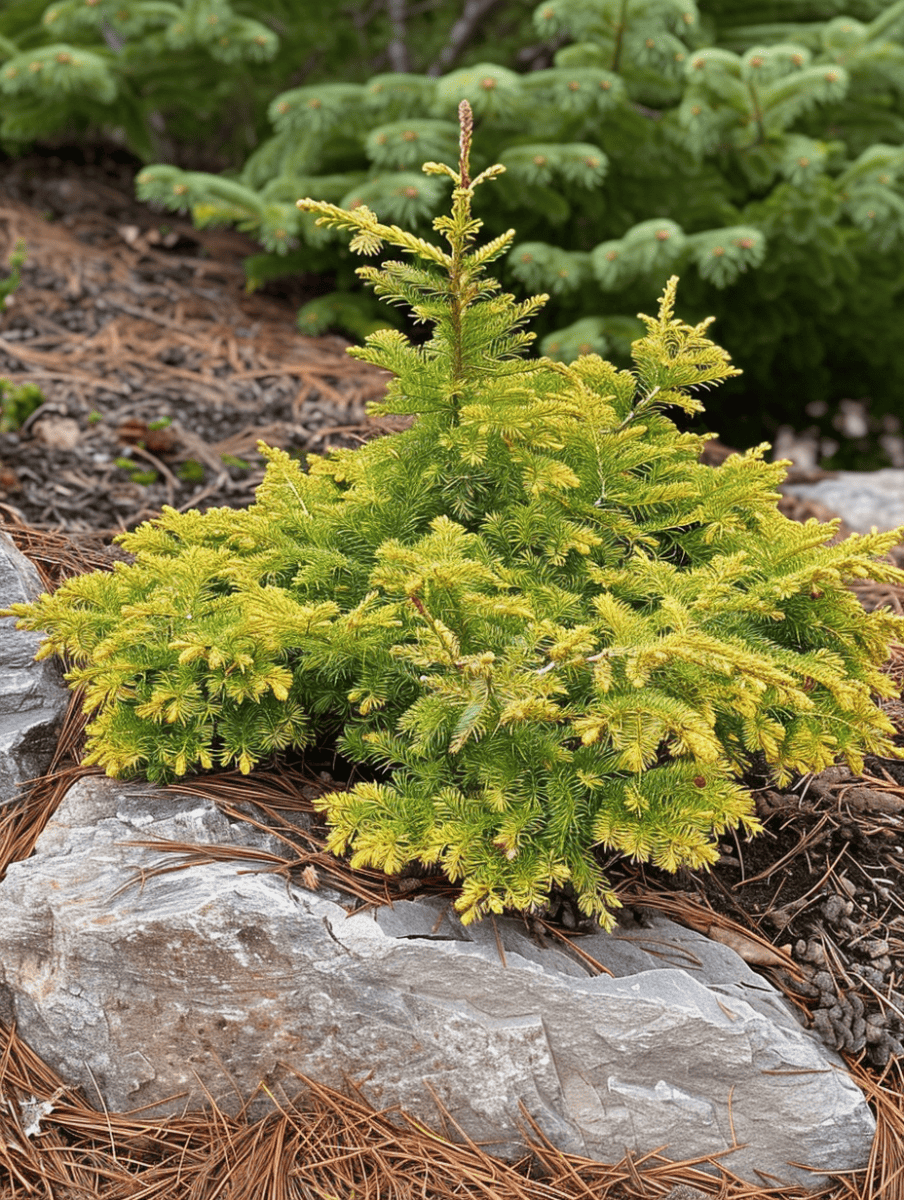
Dwarf Nordmann firs prefer sun and partial shade, like many other conifers. Make sure you plant your conifer in a place where it can thrive, and you'll be able to enjoy its evergreen color all year.
You can find this landscaping fir and more like it at your local nursery.
6. Dwarf Algerian Fir
Unlike some of its cousins, the Dwarf Algerian fir (Abies numidica) is a bit prickly - literally. Where other conifers have soft pines, the Dwarf Algerian has stiff pines meant to drive off small animals. As a result, this is the ideal conifer to work with if you have a rabbit problem or want to discourage pests from approaching your garden.
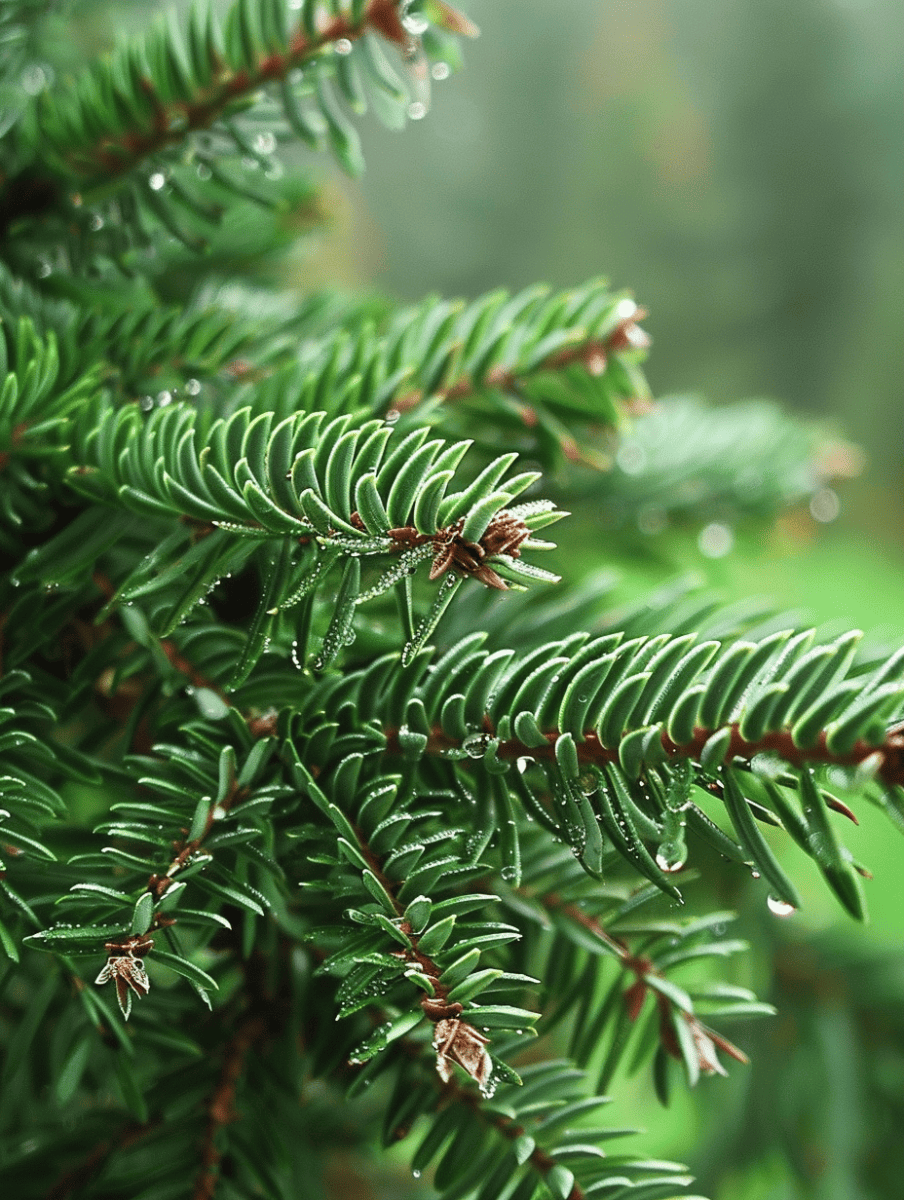
Dwarf Algerian firs prefer to be exposed to full sunlight and little shade. They grow in a conical fashion, but relatively slowly, gaining only up to four inches per year.
You can find this landscaping fir and more like it at your local nursery.
7. Dwarf Himalayan Cedar
Also known as the Gold Cascade, the Dwarf Himalayan Cedar (Cedrus deodara) is well-liked for its "weeping" branches and compact shape. While these cedars do grow up to three feet in width, they'll still play nicely with the other conifers or flowers you're using to landscape your yard.
8. Dwarf Cedar of Lebanon
Looking for something a little more unique? Dwarf Cedars of Lebanon (Cedrus libani) may not be the brightest of the bunch, but their unique gray coloration and their spring flowers are stunning to witness.
This horizontal cedar is the slowest-growing of its kind, maxing out at a growth rate of two inches per year.
9. Dwarf Lawson Cypress
Dwarf Lawson Cypress (Chameacyparis lawsoniana 'Azurea') is another blue-tinted conifer that makes a splash in your landscaping.
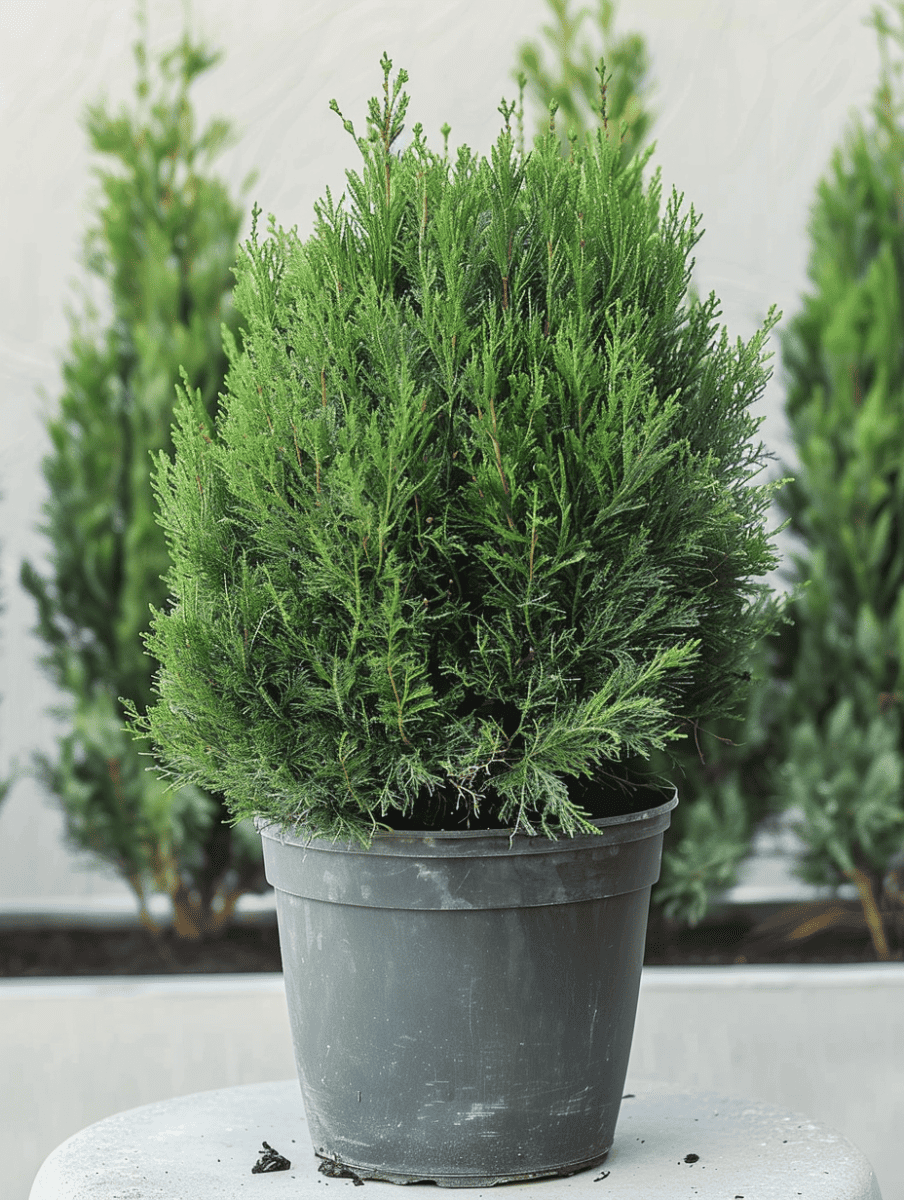
This conifer grows a little faster than its cousins, with an average growth rate of seven inches a year. That said, this is still considered to be a dwarf conifer that thrives in partial shade.
You can find this landscaping conifer and more like it at your local nursery.
10. Dwarf Sawara False Cypress
Also known as the "Cream Ball," the Dwarf Sawara Flase Cyprus (Chamaecyparis pisifera) is another slow-grower.
Lighter in color than many of its cousins, this conifer grows in both conical and circular patterns. That kind of versatility makes it ideal for the adventurous landscaper.
11. Dwarf Japanese Cedar
Looking for something a little smaller? Dwarf Japanese Cedars (Cryptomeria japonica) max out at fix feet and tend to keep to themselves once planted.
12. Dwarf Ginko Biloba
You might know this conifer better as the Maidenhair Tree. Well-loved for its unique texture and bright spring leaves, the Dwarf Ginkgo Biloba - also the tree's Latin name - should serve as a focal point in any landscaper's design plan, though its three-foot max height will keep it from dominating your scene.
13. Dwarf European Larch
For another small, weeping conifer, look no further than Europe's "Little Bogle," the Dwarf European Larch (Larix dedicua).
This conifer can grow just about anywhere thanks to its hearty root system. It prefers full sun and will wow anyone visiting your home with its bright green coloration.
14. Dwarf Tamarack Larch
The Dwarf Tamarack Larch (Larix laricina 'Steuben') is more frequently referred to as the Steuben American Larch. These conifers love the sun and swill retain their green coloration all year round, regardless of the weather.
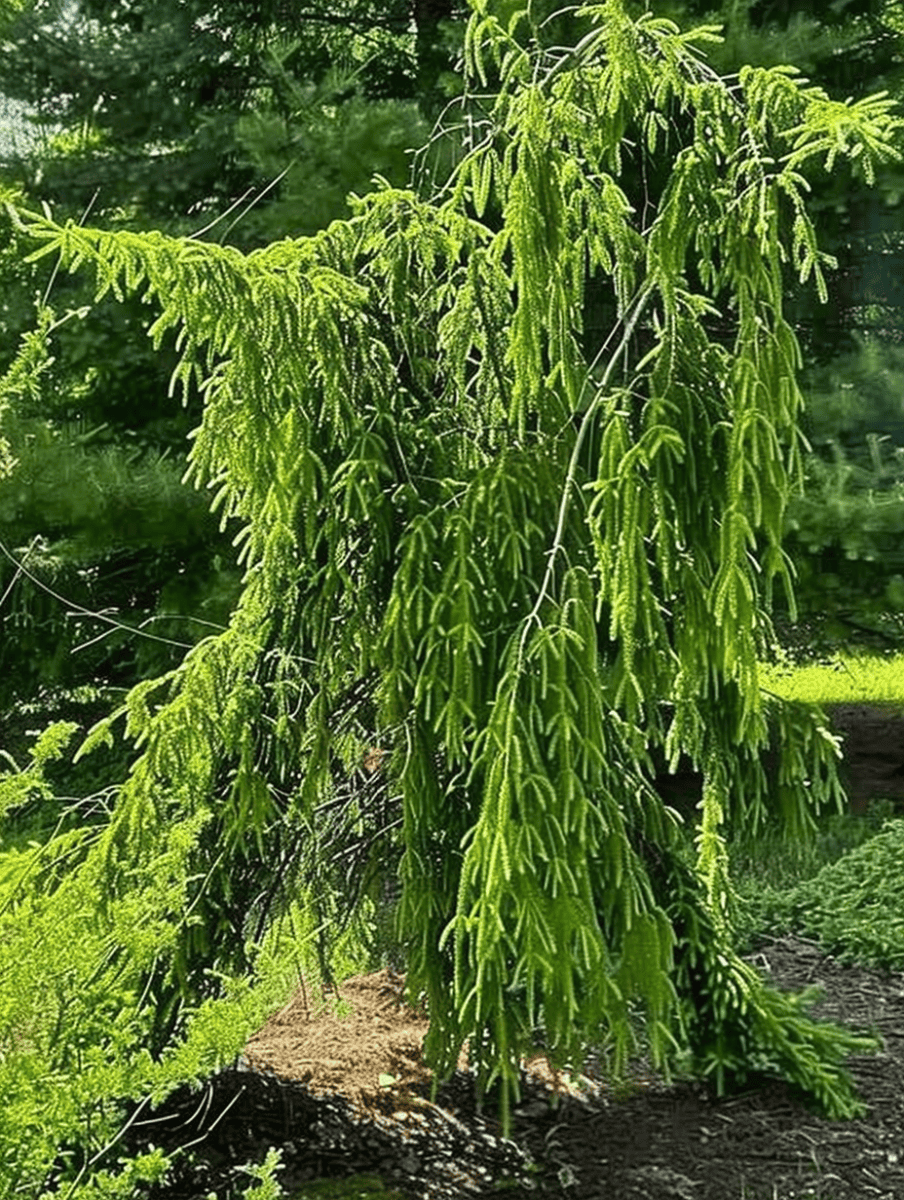
The Steuben also has relatively slow growth, meaning that it will reach its peak height several years after its initial planting. Even before then, though, you'll be able to enjoy its globose shape and the way it accents your landscaping.
You can find this landscaping larch and more like it at your local nursery.
15. Dwarf Norway Spruce
Dwarf Norway Spruces (Picea abies 'Pumila') can grow in the standard conical shape of a spruce or as globes closer to the ground. Both growth patterns are able to withstand cold winters and grow relatively slowly.
If you want to add texture to your yard, there's no better way to do it - the pines on a Norway spruce add some extra pop to the visual appeal of your yard while also providing winter and fall yards with extra color.
16. Dwarf Englemann Spruce
Looking for a deer-resistant addition to your yard? Then look no further than the Dwarf Englemann Spruce (Picea engelmannii 'Hoodie'). This spruce tree never gets too large, topping off at five feet tall and three feet wide. At first, its growth will appear to be uneven, but over time it will take on its more traditional conical shape.
17. Dwarf White Spruce
The Dwarf White Spruce (Picea glauca 'Conica') is the perfect spruce to both beautify your lawn and protect it from strong winds. The branches are reasonably flexible and soft to the touch, making them ideal for a home with children.
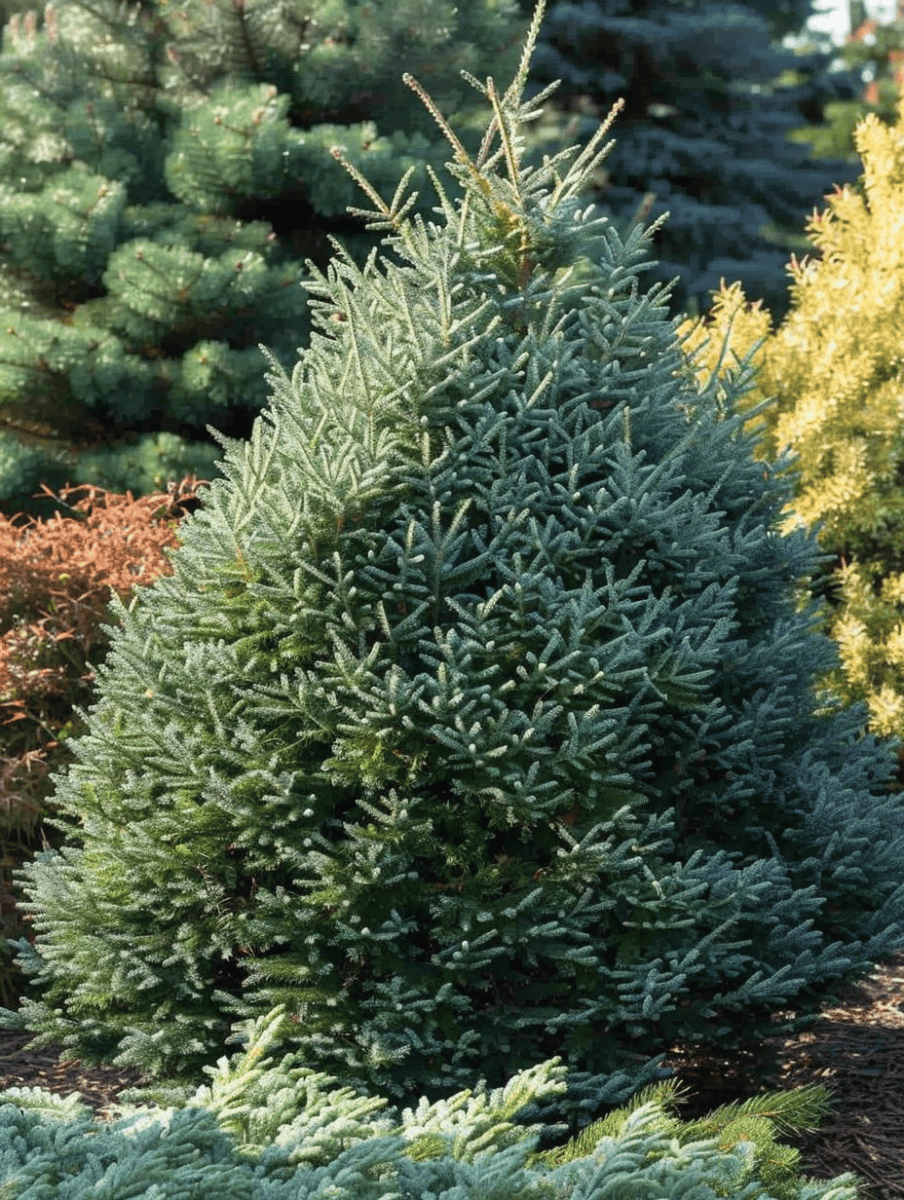
The dwarf white spruce reaches eight feet in height when it's fully grown and takes on the conical shape that defines so many spruces.
You can find this landscaping spruce and more like it at your local nursery.
18. Dwarf Serbian Spruce
This "Nana" spruce may not be as loving as your grandmother, but it's earned its name nonetheless. A unique looker in any yard, the Dwarf Serbian Spruce (Picea omorika) appears two-toned in the daylight, much in the same way older women's hair can appear both white and blue.

These spruces can grow conically or in globes, depending on how they were propagated. Either way, they prefer rockier terrain and will top out at six feet in height.
19. Dwarf Colorado Spruce
Another conical grower, the Dwarf Colorado Spruce (Picea pungens) tops out at five feet tall and six feet wide.
This smaller conifer prefers damp soil and full sun, with a little bit of shade on the side.
20. Dwarf Jack Pine
Also known as "Tucker's Dwarf," the Dwarf Jack Pine (Pinus banksiana) is considered a spreader, growing where it's able around your existing foliage.
This is a denser conifer with shorter pines to compensate for its urge to grow. Even so, so long as it's given the space it needs, it will make an excellent focal point in yard landscaping.
21. Dwarf Scotch Pine
Another conical pine, the Dwarf Scotch Pine (Pinus sylvestris) tops out at a mere four feet in height, making it a cute addition to your front step.
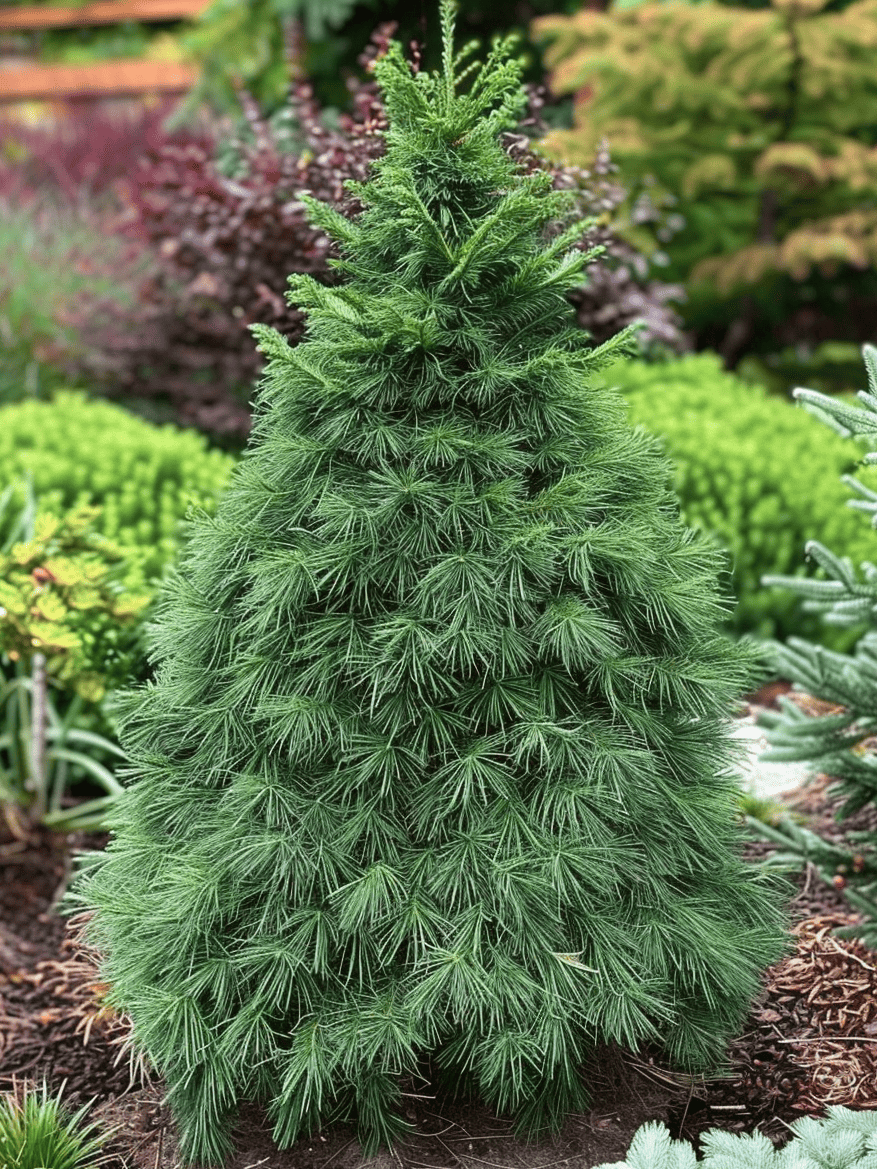
There are few dwarf pines that can withstand the winter's cold better than this conifer can. If you're looking for extra holiday flair in the winter and delicate pine aroma in the summer, this is the pine to plant.
You can find this landscaping pine and more like it at your local nursery.
22. Dwarf Pacific Silver Fir
Dwarf Pacific Silver Fir trees and bushes (Abies amabilis) are more frequently referred to as "Spreading Stars," a name entirely based on their growth patterns.
If you're looking for a spiny fir that stays low to the ground and covers up to eight feet of space, then this is the one for you.
You can find this landscaping fir and more like it at your local nursery.
23. Dwarf Balsam Fir
For a rounder, flatter fir, look for Dwarf Balsam Firs (Abies balsamea 'Nana'). These smaller fir plants tend to grow in globose shapes, and they do not tend to exceed three feet in height and width.
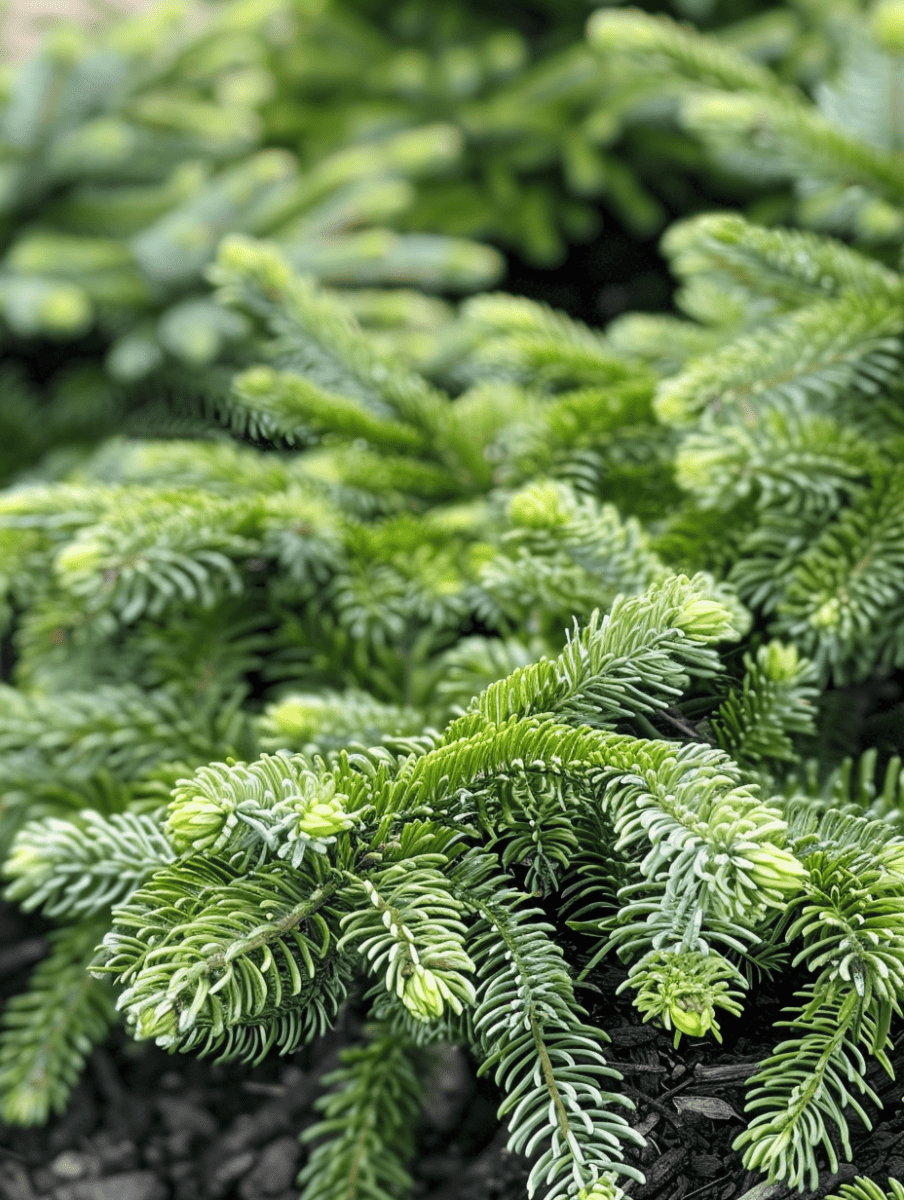
You can find this landscaping fir and more like it at your local nursery.
24. Dwarf Japanese Black Pine
Japanese Black Pines (Pinus thunbergii 'Koto buki') are well-loved for this stiff needles and unique growth pattern. With considered traditionally conical, these conifers appear to be stacked when grown vertically, lending additional flair to any landscape.
Like many other conifers, Dwarf Japanese Black Pines prefer partial shade. That said, these conifers can grow a little faster than their cousins, with an average growth rate of three to five inches per year.
25. Dwarf Umbrella Pine
Dwarf Umbrella Pines (Sciadopitys verticallata 'Picola') are a Japanese breed of pine. They take the cake as the slowest growers in the world of dwarf conifers. These pines shouldn't exceed three feet in height and will grow in the traditional conical manner unless otherwise trimmed.
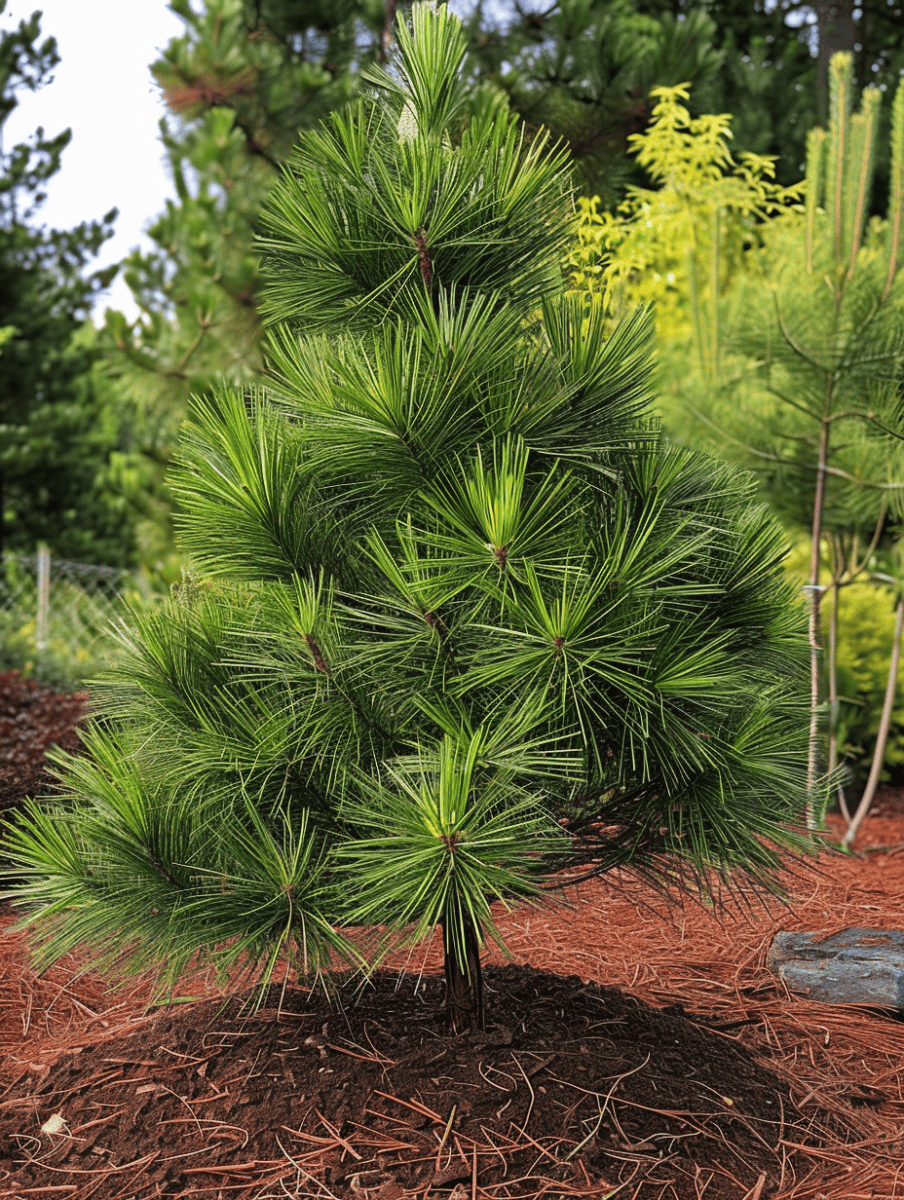
You can find this landscaping fir and more like it at your local nursery.
26. Dwarf English Yew
The English Yew (Taxus baccata) also goes by the name, Silver Spire, giving this conifer a regal first impression. That silver isn't a misattribution, either - all year round, you'll be able to enjoy this tree's silver and white coloration as a unique addition to your landscaping.
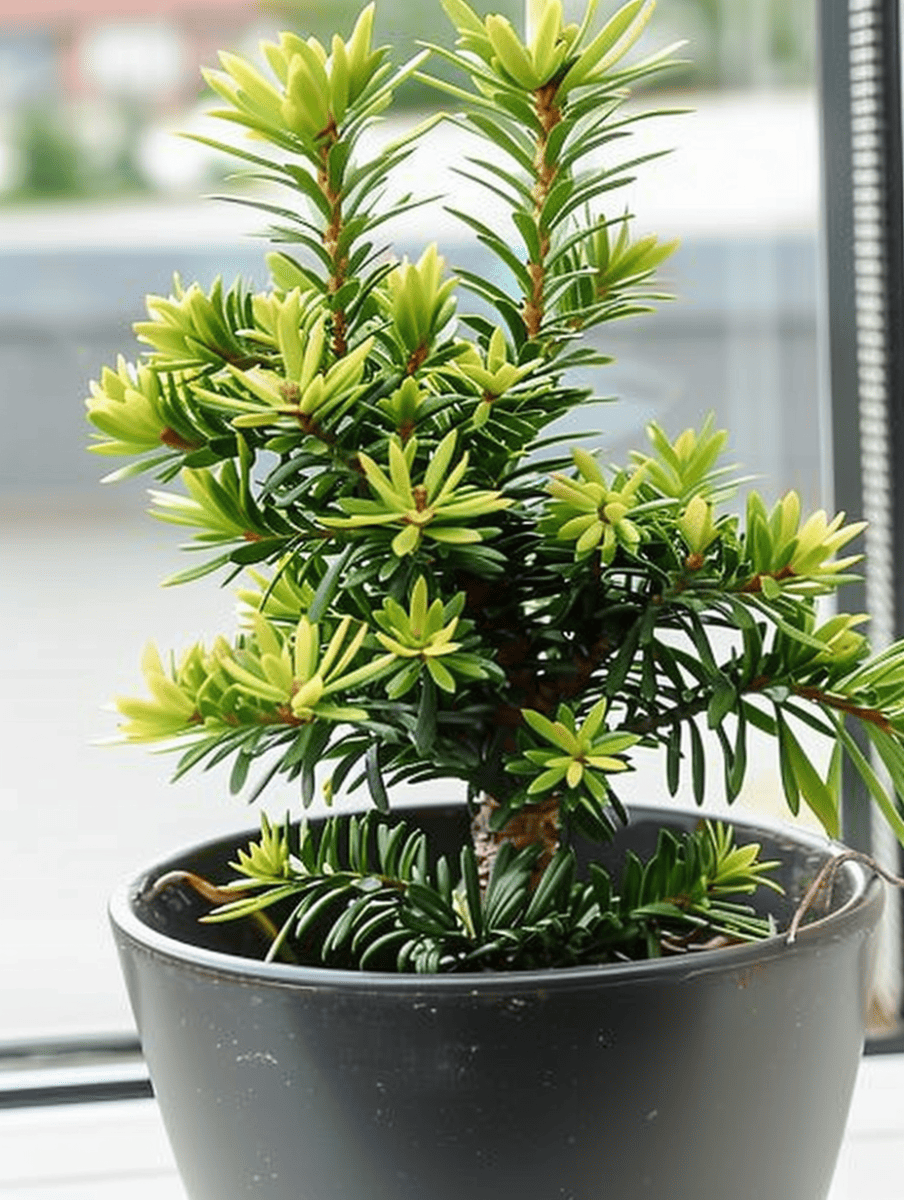
You can find this landscaping yew and more like it at your local nursery.
27. Dwarf Bald Cypress
The Dwarf Bald Cypress (Peve Minaret) looks more like a fern than it does a conifer, making it the perfect substitute if you want to enjoy a bit of greenery throughout the entire year.
28. Dwarf Canadian Hemlock
Also known as the Jervis hemlock, the Dwarf Canadian Hemlock (Tsuga Canadensis) is another conifer that thrives in cooler weather and tougher soil. This conifer likes partial shade and will grace your landscaping designs with its adorable build.
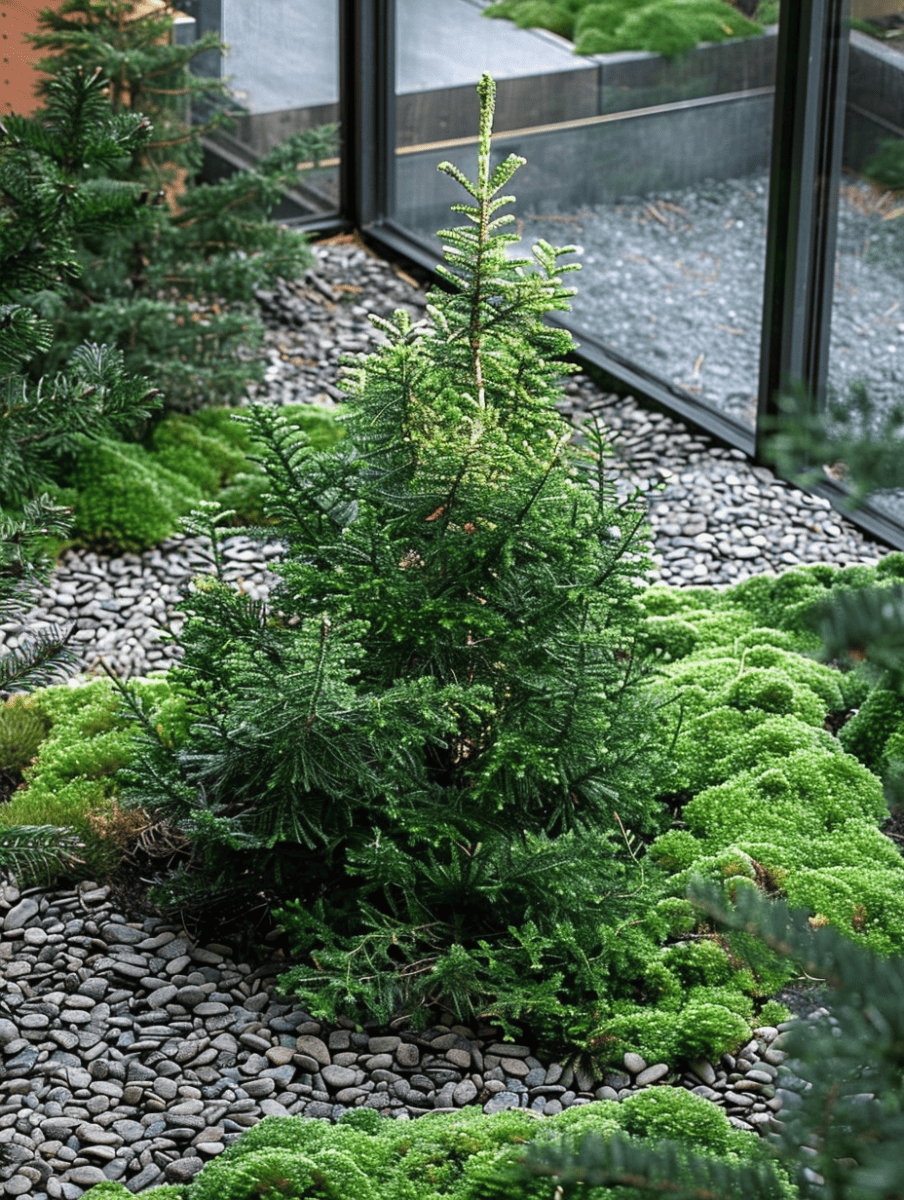
You can find this landscaping hemlock and more like it at your local nursery.
29. Dwarf Mountain Hemlock
If you live in a spot with higher elevation, then you're going to want to invest in a Dwarf Mountain Hemlock (Tsuga mertensiana). Most nurseries have to have these landscaping hemlocks delivered, as they grow best in full sun in the mountains.
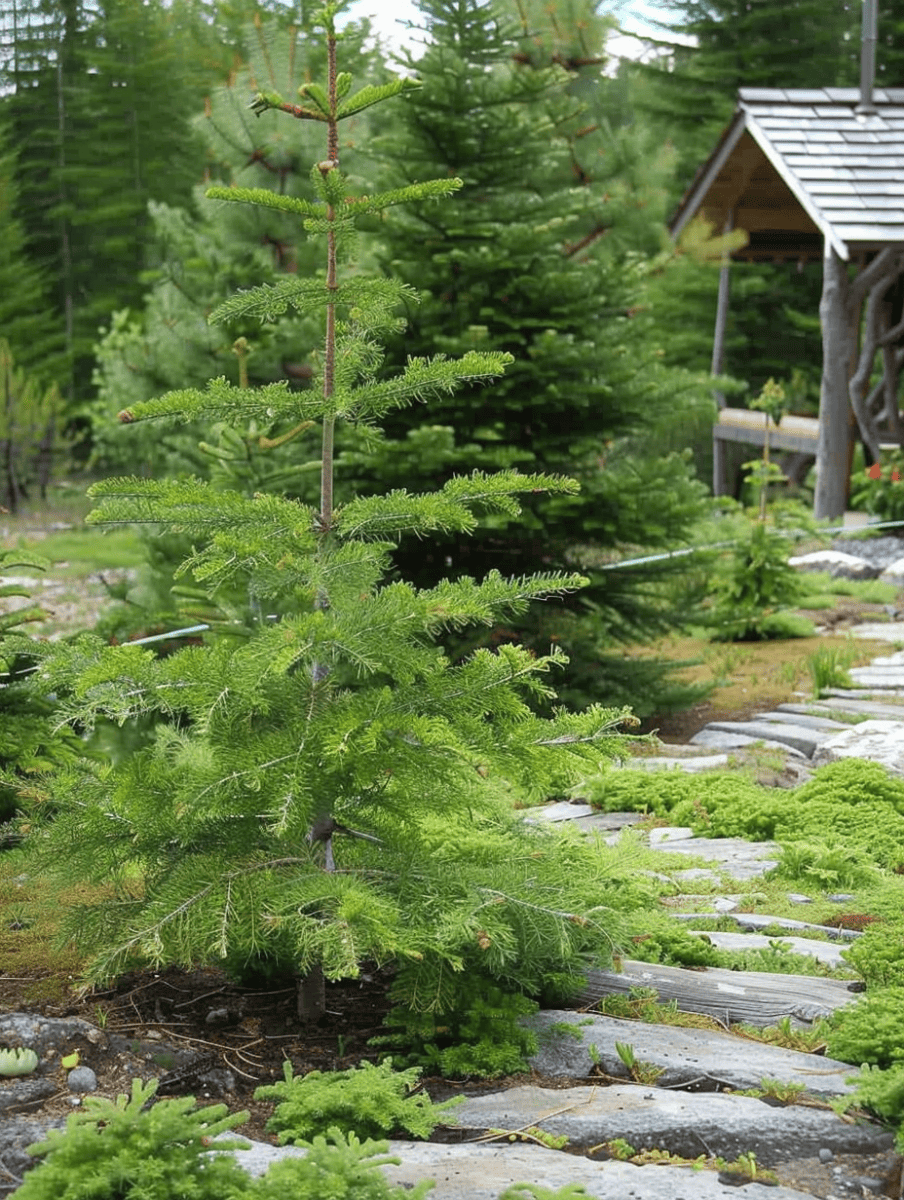
The Dwarf Mountain Hemlock grows at a rate of half a foot a year but will top out at ten feet in height. Water them carefully through the spring and the summer, but be patient, as well. If you're living in an area with lower elevation, you may not see the immediate brightness that these trees develop at higher elevations for a while.
You can find this landscaping hemlock and more like it at your local nursery.
30. Dwarf Western Red Cedar
Dwarf Western Red Cedars (Thuja plicata) are also known as "Eschrich's Grune Kugel" or "Green Balls." These miniature conifers grow in small orbs close to the ground, making them easy to care for as they grow.
31. Dwarf Eastern Arborvitae
Dwarf Eastern Arborvitae (Thuja occidentalis) are a hardy bunch, ideal for yards that undergo extreme changes in weather as the seasons switch over. Likewise, these dwarves hold up well regardless of what soil they're exposed to thanks to a genetic versatility.
If you're looking for a conifer that's easy to take care of and that can withstand all types of soil, then this is the conifer to work with.
32. Dwarf Oriental Arborvitae
For non-conventional coloration in your evergreen, why not plant a Dwarf Oriental Arborvitae (Thuja orientalis)? Also known by the scientific, botanical name, "Franky Boy," these conifers low partial shade and are faster growers than most, gaining up to nine inches per year.

You can find this landscaping conifers and more like it on Amazon.
Enjoyed this post? Pin the image below to save it for later, or share it with your followers!
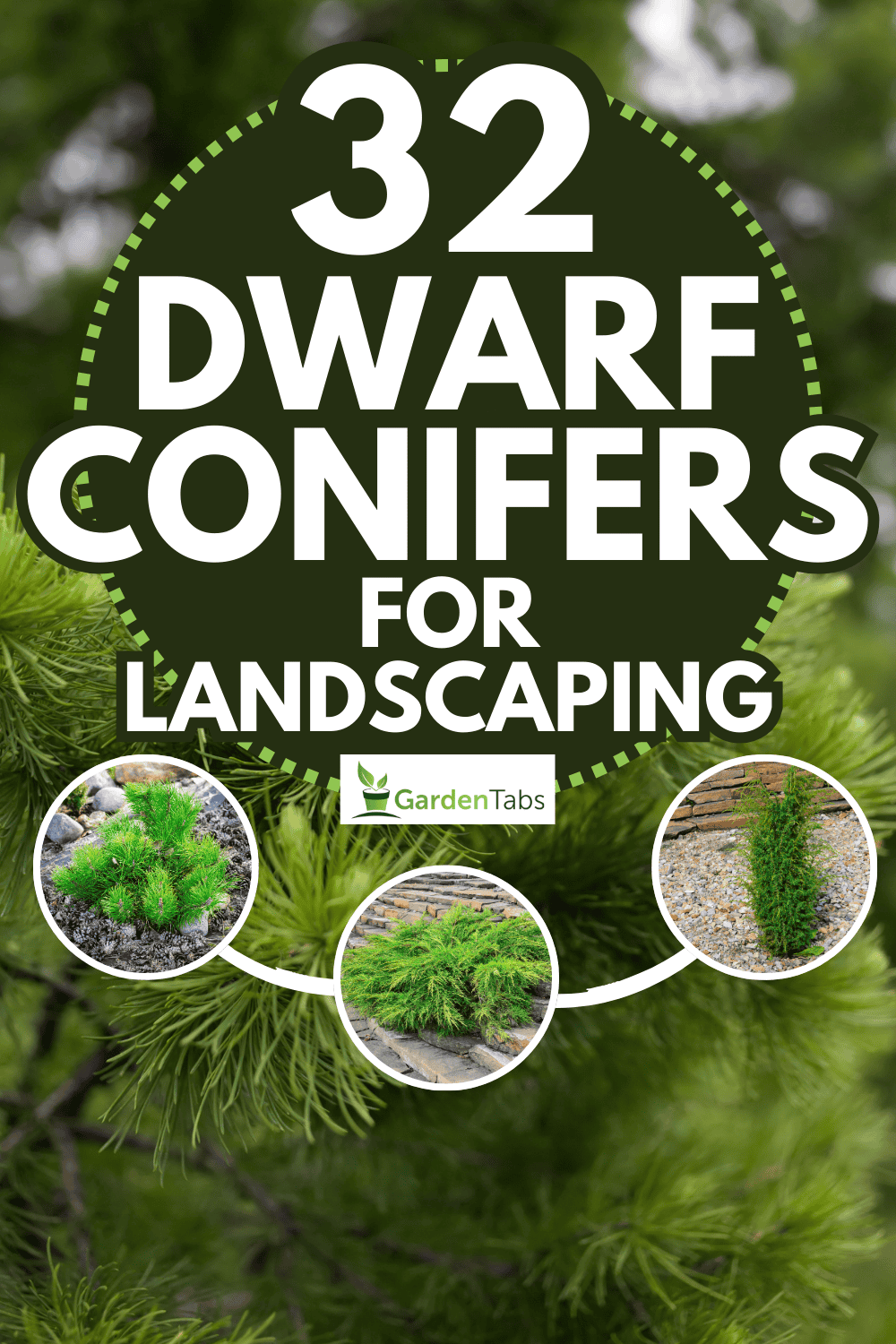
Don't miss out on these other great plant guides:














